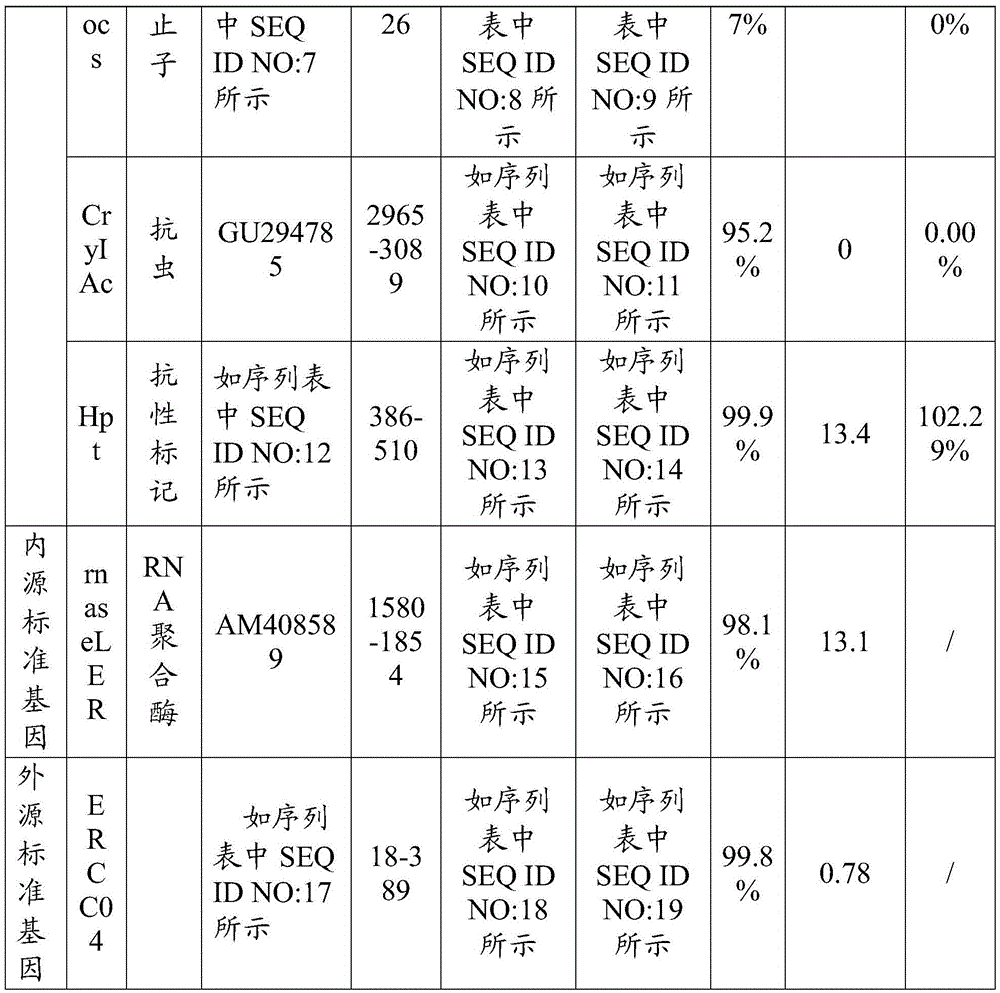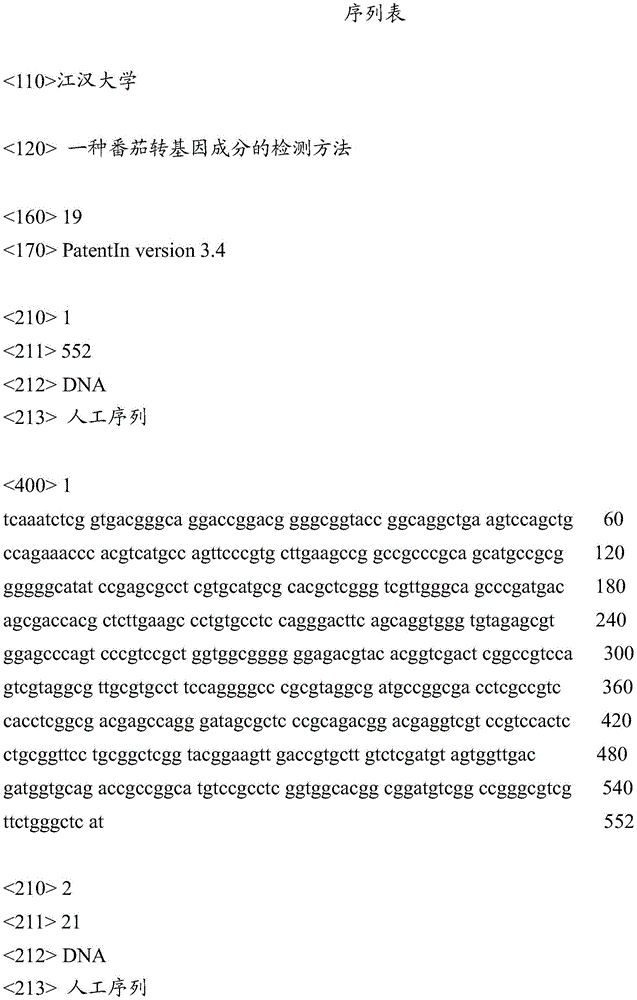Detection method of tomato transgenic component
A technology of genetically modified ingredients and detection methods, applied in the field of detection of tomato genetically modified ingredients, can solve problems such as failure, wrong administrative punishment of non-genetically modified varieties, and achieve accurate and reliable results
- Summary
- Abstract
- Description
- Claims
- Application Information
AI Technical Summary
Problems solved by technology
Method used
Image
Examples
Embodiment
[0029] The Bialaphos resistance (Bar) gene was introduced into the Qiangfeng tomato variety by the Agrobacterium-mediated method, and after selfing and purification for 3 generations, the transformed Qiangfeng tomato variety seeds were obtained as the tomato to be tested in this embodiment. Variety. Among them, Qiangfeng tomato is a transgenic tomato recipient variety, which was cultivated by Vegetable Institute of Chinese Academy of Agricultural Sciences, and the Qiangfeng tomato seeds used in this example were preserved and propagated by Jianghan University.
[0030] The method for detecting genetically modified ingredients in tomato, the specific steps are as follows:
[0031] Step 1. Determine the transgenic components to be detected in the sample to be tested, the endogenous standard gene in the sample to be tested, and the exogenous standard gene in the sample to be tested. The specific method is as follows: the sample to be tested is a tomato plant or a part of a tomato...
PUM
 Login to View More
Login to View More Abstract
Description
Claims
Application Information
 Login to View More
Login to View More - R&D
- Intellectual Property
- Life Sciences
- Materials
- Tech Scout
- Unparalleled Data Quality
- Higher Quality Content
- 60% Fewer Hallucinations
Browse by: Latest US Patents, China's latest patents, Technical Efficacy Thesaurus, Application Domain, Technology Topic, Popular Technical Reports.
© 2025 PatSnap. All rights reserved.Legal|Privacy policy|Modern Slavery Act Transparency Statement|Sitemap|About US| Contact US: help@patsnap.com



